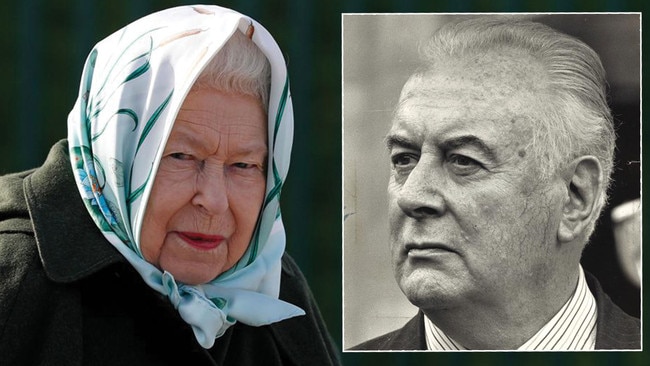
The letters tell a story of a crafty and calculating Sir John Kerr flooding Buckingham Palace with details of the running 1975 crisis and making clear, from the start, he saw dismissal as an option.
Kerr cultivated the Palace relentlessly. He cultivated the Queen’s private secretary, Sir Martin Charteris, and Prince Charles. He tutored the Palace about his options and sought reassurance but gave neither the Queen nor Charteris any advance warning of the Dismissal.
The governor-general wanted to be the actor. He wanted to be the agent of dismissal but also ensure he retained the confidence of the Queen. The letters document a story of shame, deception and impropriety — Kerr opened his heart to the Palace but denied his inner thinking to Whitlam.
Kerr trusted the Queen but not his prime minister. If the letters serve any purpose, they further expose Kerr’s behaviour, not any improper behaviour by the Queen. There was none.
The Australian public and the republic cause are not enhanced by the creation of false conspiracy stories about the Palace. The Dismissal was an Australian project.
Six days before the Dismissal, Charteris told Kerr by letter: “It is good that the Queen is being informed but, of course, this does not mean that she has any wish to intervene, even if she had the constitutional power to do so. The crisis, as you say, has to be worked out in Australia.”
This was the foundation on which the dialogue between Kerr and the Palace was conducted. In the dialogue Kerr generates with the Palace, Charteris offers three points of advice. First, that Reserve Powers exist, something Kerr knew.
Second, if such powers were to be exercised, it must be “at the very end when there is demonstrably no other course” — a warning that Kerr failed to heed. This is not the Palace urging dismissal but about the Palace caution in an environment where dismissal was an option. This warning is the key to subsequent reservations by Palace officials about Kerr’s intervention.
And third, Charteris told Kerr that if Whitlam advised the Queen to remove him as governor-general, the Sovereign “would have no option but to follow the advice of her prime minister.” Again, Kerr knew that.
In his October 2 letter, Charteris added a personal observation that in such a situation — with Whitlam involving the Queen in the crisis — “you may be sure the Queen would take most unkindly to it.” That may have been flattery of Kerr, but it was surely true.
Many people will see any dialogue between Kerr and the Palace as improper. But this is spurious. The Queen is our head of state and her powers are exercised in Australia by the governor-general. Every governor-general keeps the Palace informed of politics in Australia. That is integral to the job.
The real issue is whether — as some observers claim — the Queen authorised dismissal and was implicated in a secret arrangement with Kerr. There is still no evidence of that.
Post-Dismissal, Kerr wrote to the Palace on November 11 saying: “I should say I decided to take the step I took without informing the Palace in advance because under the Constitution, the responsibility is mine and I was of the opinion that it was better for Her Majesty not to know in advance, though it is, of course, my duty to tell her immediately.”
On November 17, Charteris wrote to Kerr saying: “If I may say so with the greatest respect, I believe that in NOT informing the Queen what you intended to do before doing it, you acted not only with perfect constitutional propriety but also with admirable consideration for Her Majesty’s position.”
Understand what this means — the Palace is thanking Kerr for keeping the Queen out of the action. It regards this discretion on his part as perfectly proper. Indeed, it was deeply relieved the Queen was not involved — a stance the Palace insisted upon before and after the Dismissal.
In his November 20 letter to Charteris, Kerr defended himself from the central charge made by Whitlam and Kerr’s critics — that the governor-general should have given Whitlam the option of going to the election as prime minister.
Sir John said giving Whitlam 24 hours’ notice was not an option: “I simply could not risk that outcome for the sake of the monarchy.”
He said Whitlam was likely to advise the Queen “in the strongest of terms that I should be immediately dismissed.”
This would have created a situation where “I would in fact be trying to dismiss him whilst he was trying to dismiss me, an impossible position for the Queen.”






The long-secret Kerr letters explode the notion of the Queen as an authorising agent of Gough Whitlam’s dismissal. There was a conspiracy — but at Yarralumla, not London.